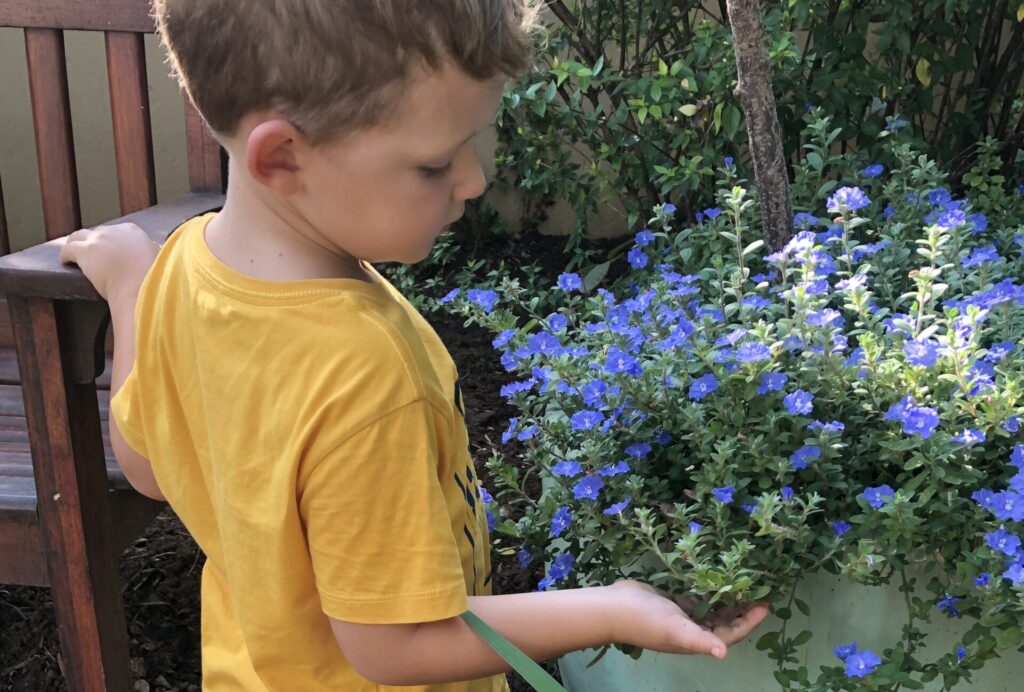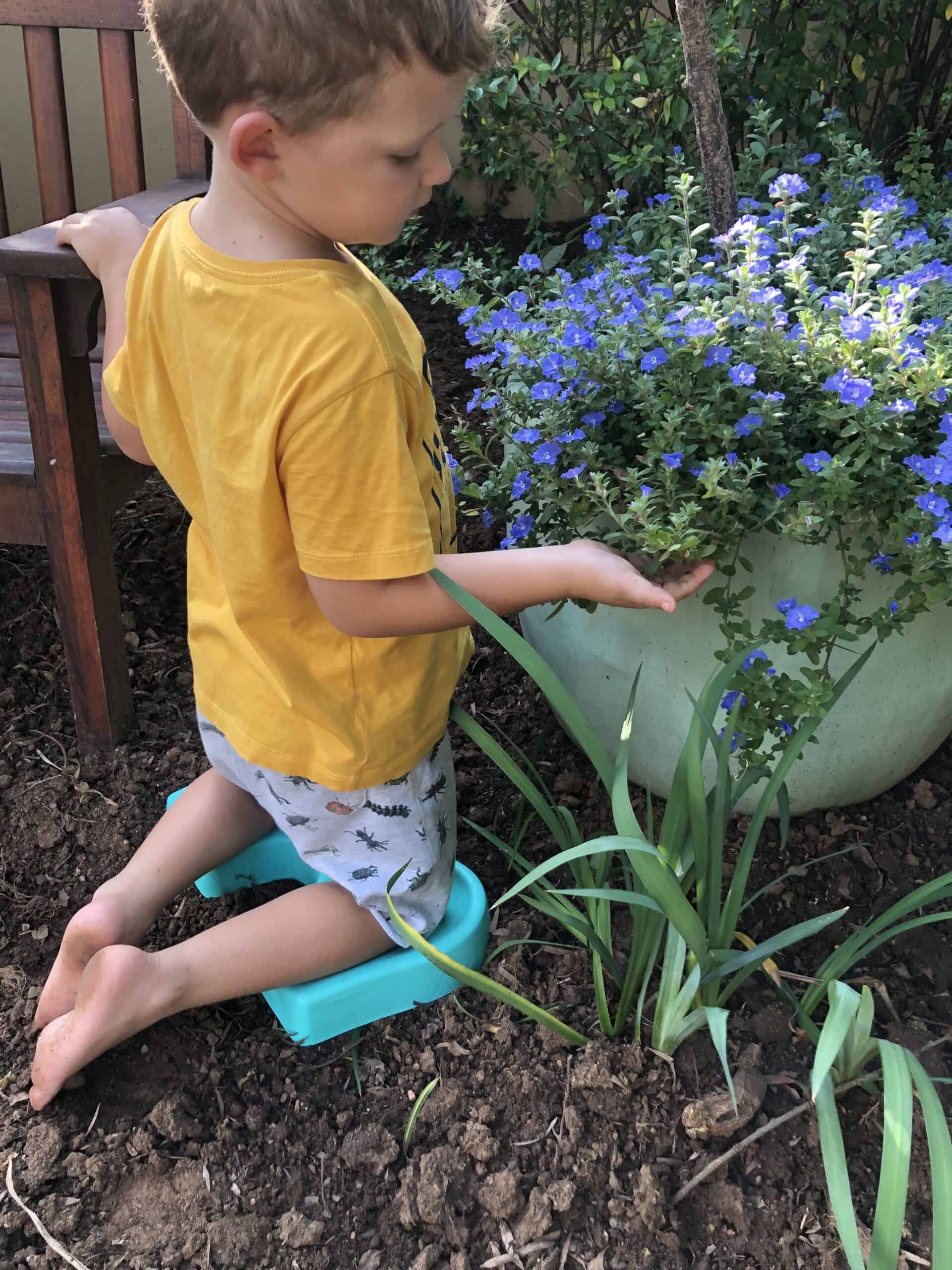Teaching kids about gardening encourages an appreciation for nature from a young age. It also shows the impact of putting effort into something and seeing a result. It shows awareness of where our food comes from as well and a skill that will always provide for you.
How do we start?
- Designate an area of your garden or a container that is specifically for your child. Make the area fun with a little garden décor acquired from your local nursery.
- Let them select what to plant. We suggest veggies that they don’t altogether dislike (it’s easier to get them enthused when they know they aren’t growing broccoli) and also go colorful. Kids respond to color. Here are some great first vegetable and fruit plants to start off with (climate and weather dependent):
- Strawberries – if your kids are a bit older start off with strawberry seeds. Let them harvest the seed from an existing strawberry.
- Blueberries – blueberries are prolific fruit-bearing plants if they are happy. This is a great example of teaching kids the importance of soil and compost. Blueberries prefer acidic soil, so either make your own by adding iron sulphate or obtaining acid compost from the nursery. To further teach the lesson, consider iron shavings to be added in very small doses to explain the concept of iron and acidity.
- Tomatoes – these hardy plants lead very little in terms of intervention and thanks to birds, bugs, wind etc tend to always find a spot in the garden and germinate. Grow these from seeds as they grow quickly and it\’s important to teach grooming a plant from seedling stage. Tomatoes also distinguish the importance of rambling vs bushy plants.
- Cucumbers – not a particularly bitter vegetable and refreshing to eat, most kids are not averse to growing these climbers. Easy to grow, harvest and not particularly demanding in terms of soil (just make sure it\’s fertile and well drained) these are fun and friendly vegetables.
- Seeds or seedlings – take the cue from the time of year, age of child and child’s level of enthusiasm. Seedlings give you a head start and with the right love and attention a very busy and full garden soon enough.
- Don’t forget the compost routine – veggie peels, recycled paper etc. These are important by-products of our daily lives and teach kids about recycling and the circle of life. They should understand the impact of their waste as well as what breakdowns into food for plants.
- Choose color – we reiterate this point because color in food also teaches kids about a balanced diet (and no we don’t mean pink vs green cereal) but rather that color all-round also plays a part in nutrition. By encouraging kids to try colorful natural food we are raising conscious and healthy eaters.
- Introduce herbs and companion gardening – this is the kind of periphery plant that the average child would be none the wiser of. However, by showing the combinations of herbs and veggies you may just encourage a budding MasterChef. It’s also a good precursor to explain where medicine comes from.
Kids are naturally curious and love adventure. Adding features like earthworms, a watering system (a garden hose with holes poked in should do fine), a house for birds or bugs and perhaps the odd tunnel and quirky feature will keep them coming back for more.
Let them take charge and enjoy the family time together.
For family healthcare that puts your family first visit us at https://project7.jayedhosen.com/
Read our previous article here: https://project7.jayedhosen.com/the-best-exercises-for-improving-your-joints-and-preventing-injuries/












